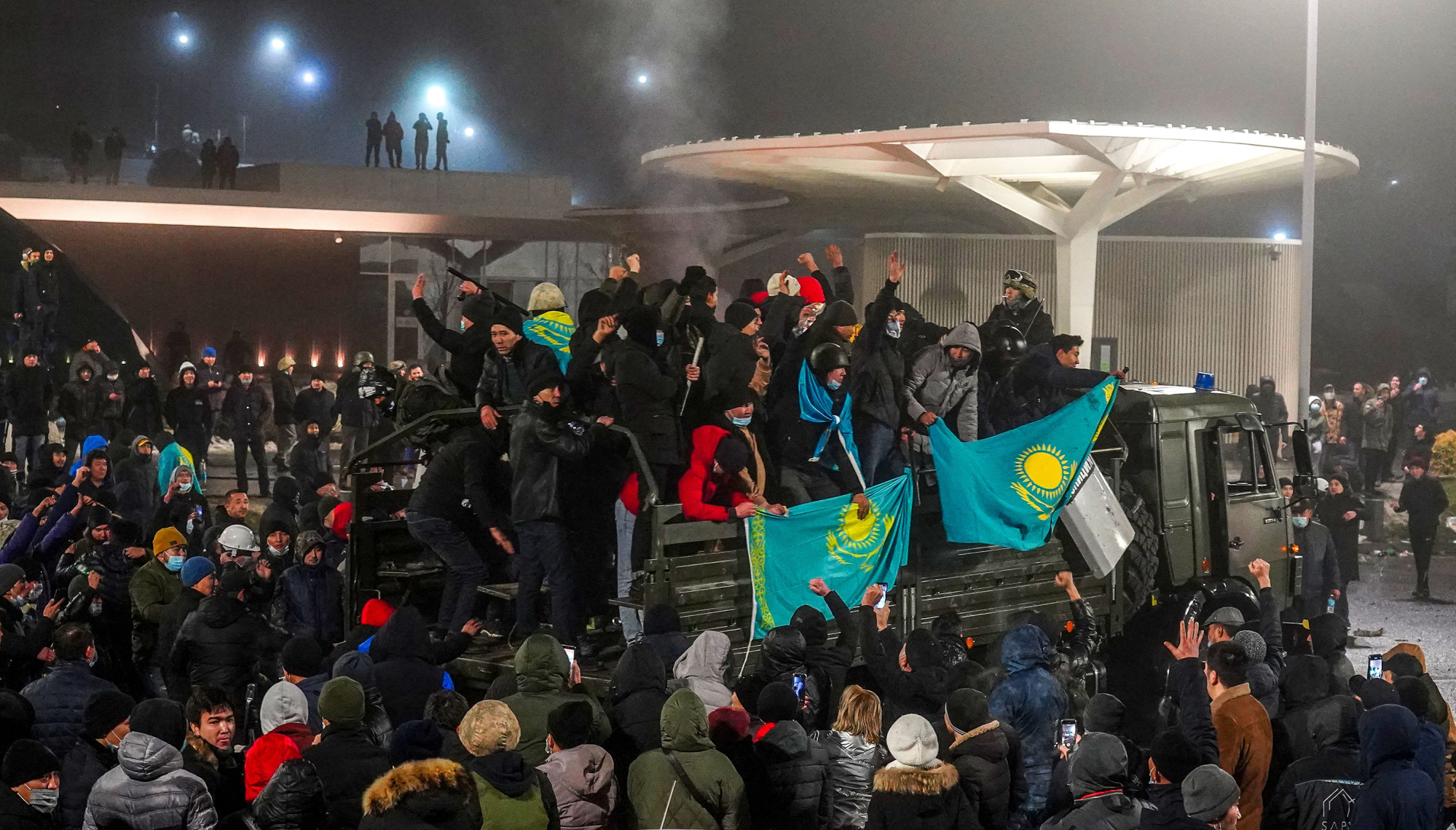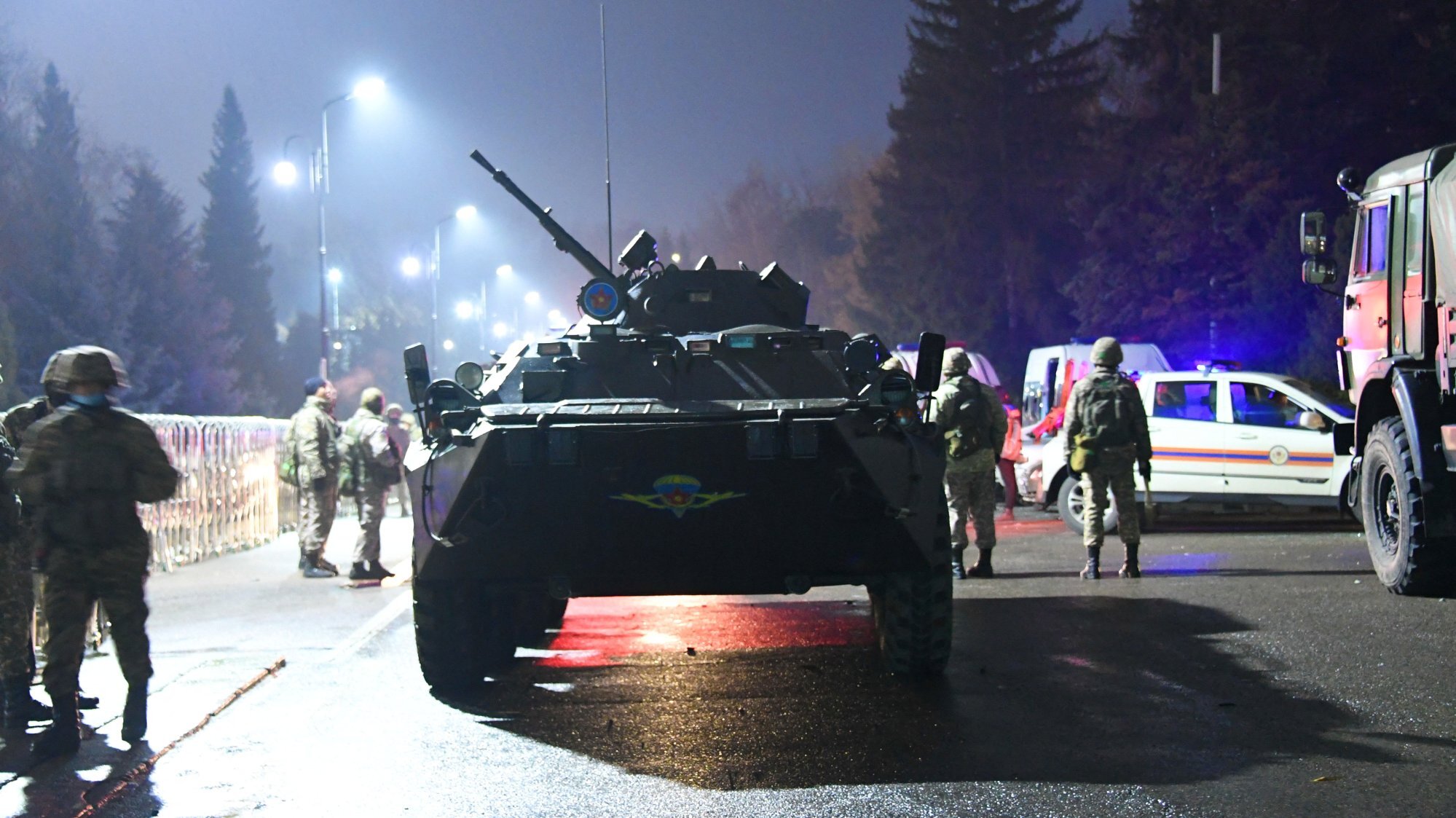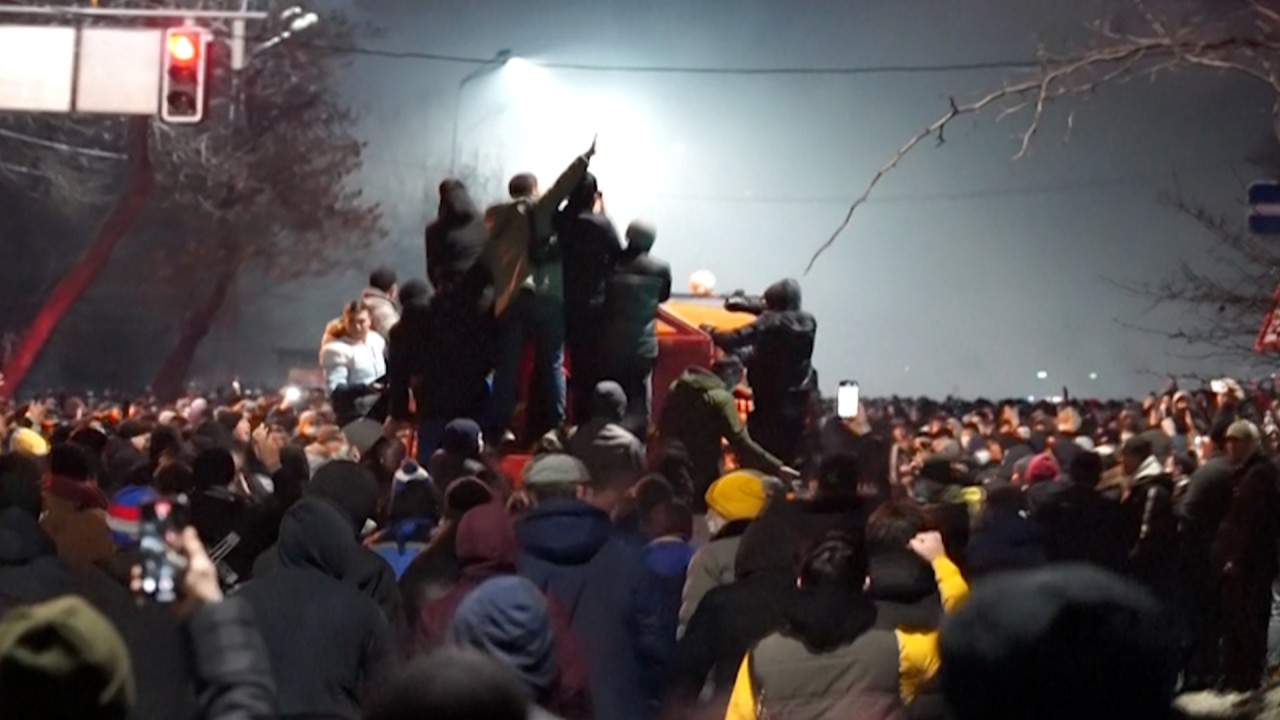
Russia sends paratroopers to Kazakhstan as ‘dozens’ killed in unrest
- Russian troops sent as part of a peacekeeping force after Kazakh president asked for help
- Kazakhstan’s largest city Almaty hit by deadly clash between security forces and protesters
Russia has sent paratroopers into Kazakhstan as part of an international peacekeeping force to quell deadly unrest in the central Asian country.
Earlier, security forces in Kazakhstan killed dozens of protesters trying to storm government buildings overnight, police said Thursday, as the unrest sparked by rising fuel prices boiled over into the biggest protests since independence in 1991.
“Last night, extremist forces tried to assault administrative buildings, the Almaty city police department, as well as local police commissariats. Dozens of assailants were eliminated,” police spokesman Saltanat Azirbek was quoted as saying by the Interfax-Kazakhstan, TASS and Ria Novosti news agencies.
Kazakh President Kassym-Jomart Tokayev had appealed for the intervention of the Collective Security Treaty Organization (CSTO), a military alliance of Russia, Armenia, Belarus, Kazakhstan, Kyrgyzstan, and Tajikistan, blaming foreign-trained “terrorist” gangs for the violent protests.
Later, in a statement posted by Russian foreign ministry spokeswoman Maria Zakharova, the CSTO secretariat said: “Peacekeeping forces of the Collective Security Treaty Organisation were sent to the Republic of Kazakhstan for a limited time to stabilise and normalise the situation”.
It said the deployment included units of the armed forces of Russia, Belarus, Armenia, Tajikistan and Kyrgyzstan, the five other members with Kazakhstan of the Moscow-dominated CSTO.
The statement did not specify how many troops were being sent but said the Russian contingent included members of the country’s Airborne Forces.

The troops’ main tasks “will be the protection of important state and military facilities and assistance to the forces of law and order … in stabilising the situation,” the statement said.
It said Russian forces were being transferred by military aircraft to Kazakhstan and that advance units had “already begun to fulfil the assigned tasks”.
Protests spread across Kazakhstan, a nation of 19 million this week in outrage over a New Year increase in prices for liquid petroleum gas (LPG), which is widely used to fuel cars in the west of the country.

Thousands took to the streets in Almaty and in the western province of Mangystau, saying the price rise was unfair given oil and gas exporter Kazakhstan’s vast energy reserves.
Protesters were reported to have stormed several government buildings on Wednesday, including the Almaty mayor’s office and the presidential residence, with both said to be on fire.
Thirteen members of the security forces have been killed, according to state media reports on Thursday. The deaths occurred in Almaty, the country’s biggest city, Kazakh media said.
Police said they had detained some 2,000 people in connection with ongoing mass unrest.
“Almaty police have moved forward to clear the streets... In total, about 2,000 people have been brought in,” the interior ministry said in a statement carried by Russian news agencies.
TASS news agency quoted the Kazakh health ministry as saying more than 1,000 people had been injured during the protests, and more than 400 of them were in hospital.

The full picture of the chaos was unclear, with widespread disruptions to communications including mobile phone signals, the blocking of online messengers and hours-long internet shutdowns.
The protests are the biggest threat so far to the regime established by Kazakhstan’s founding president Nursultan Nazarbayev, who stepped down in 2019 and hand-picked Tokayev as his successor.
Tokayev tried to head off further unrest by announcing the resignation of the government headed by Prime Minister Askar Mamin early on Wednesday, but protests continued.
Tokayev also announced he was taking over from Nazarbayev as head of the powerful security council, a surprise move given the ex-president’s continued influence.

With protests escalating, the government late on Wednesday said a state of emergency declared in protest-hit areas would be extended nationwide and in effect until January 19.
It imposes an overnight curfew, restricts movements and bans mass gatherings.
Much of the anger appeared directed at Nazarbayev, who is 81 and had ruled Kazakhstan since 1989 before handing power to Tokayev.

Many protesters shouted “Old Man Out!” in reference to Nazarbayev and images posted on social media showed a statue of the ex-president being torn down.
The EU and the UN called for “restraint” on all sides, while Washington urged authorities to allow protesters to “express themselves peacefully.”
Kazakhstan’s government tolerates little real opposition and has been accused of silencing independent voices.
Spontaneous, unsanctioned protests are illegal despite a 2020 law that eased some restrictions on freedom of assembly.
Agence France-Presse and Reuters

